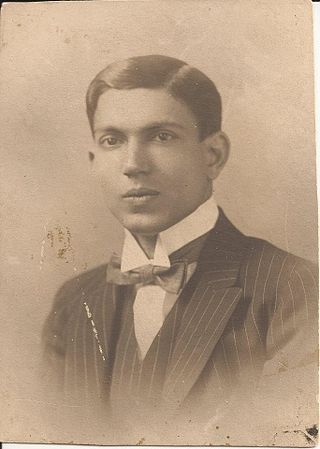
Asaf Ali was an Indian independence activist and noted lawyer. He was the first Indian Ambassador to the United States. He also served as the Governor of Odisha.

Sarala Devi was an Indian independence activist, feminist, social activist, politician and writer. She was the first Odia woman to join the Non-cooperation movement in 1921 and the first Odia woman delegate of the Indian National Congress. She became the first woman to be elected to the Odisha Legislative Assembly on 1 April 1936.

Bulusu Sambamurthy was an Indian lawyer, politician, and freedom fighter who played a key role in the Indian independence movement. He served as the President of the Madras Legislative Council from 1937 to 1942. Sambamurthy was also an advocate for the Andhra movement, which sought the creation of a separate Telugu-speaking state. He is often referred to by the honorific title of Maharshi Bulusu Sambamurthy.
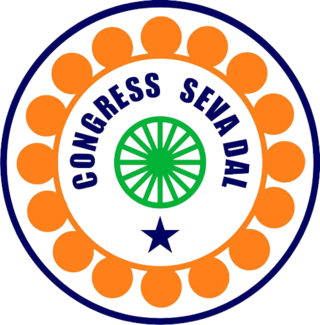
The Seva Dal is an organization of the Indian National Congress. The organization has a chapter in all the states of India. The members of the organization are known for wearing the Gandhi topi. It is headed by a Chief Organiser Shri Lalji Desai
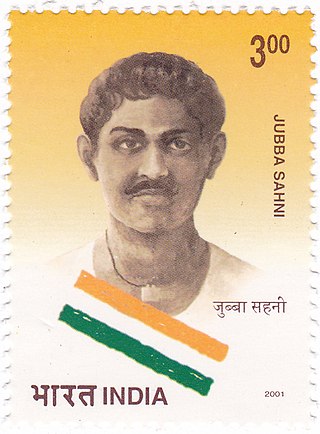
Jubba Sahni (1906–1944) was an Indian freedom-fighter and revolutionary. He accepted hanging at the age of 38 years on 11 March 1944. He is remembered as the bravest revolutionary in Bihar.
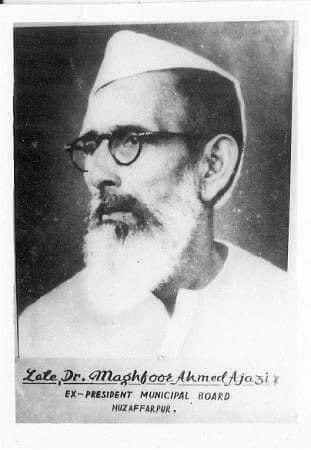
Maghfoor Ahmad Ajazi was a political activist from Bihar, prominent in the Indian independence movement.
Rani Lila Ramkumar Bhargava was an Indian freedom fighter, social worker, educationist and a former leader of the Indian National Congress. She was an associate of Indian prime minister, Indira Gandhi and was married into the family of Munshi Nawal Kishore, the founder of reportedly the oldest printing press in Asia, Nawal Kishore Press, to Munshi Ramkumar Bhargava, a fourth generation member of the family and the holder of the title of Raja from Lord Wavell, then Viceroy of India,
Gangadharrao Balkrishna Deshpande also known as Lion of Karnataka, Khadi Bhageeratha of Karnataka, was an Indian activist who was the leader of the Indian independence movement against British colonial rule from Belgaum. He was the right-hand man of both Lokamanya Tilak and Mahatma Gandhi in succession. Deshpande considered Lokamanya Tilak as his Guru. Deshpande served as Chairman of Karnataka branch of All-India Spinners' Association, and the All India Village Industries Association for some years. Deshpande was largely responsible for the installation of Premier of Bombay, B. G. Kher.

Moji Riba(1911–1973) was the eldest son of Gomo Riba and Nyapu Riba, and was an Indian freedom fighter from a village called Dari in the Lepa Rada district of Arunachal Pradesh, previously known as North-East Frontier Tracts/North-East Frontier Agency, who participated in the Indian independence movement.
Sohanlal Pathak was an Indian revolutionary from Punjab, and a member of Ghadar Party. Remembered for his martyrdom and for his propagation of the ideals of the Indian nationalism in Burma.

Azadi Ka Amrit Mahotsav or 75th Anniversary of Indian Independence was an event, in which the 75th anniversary of the independence of India was celebrated in India and abroad. It was the 76th Independence Day of India.
Shivanandan Prasad Mandal was a freedom fighter and politician. He was the first law minister of Bihar. He played a role in the Bang Bhang movement, the non-cooperation movement and the salt movement.
Moje Riba (1890–1982) was an Indian freedom fighter who contributed to the Indian independence movement. He was the first INC President of Arunachal Pradesh. On 15 August 1974, he was awarded the Tamra Patra by the then Governor of Arunachal Pradesh K. A. A. Raja at Shillong, for his sacrifice and contribution in the freedom movement. He died in 1982 at his residence in Daring village.
Narayani Devi Verma was a freedom fighter from Rajasthan in the Indian independence movement. She was the wife of fellow freedom fighter Manikya Lal Verma and together they fought with colonial, imperialist as well as feudal oppression in the erstwhile princely state of Mewar. She had played a key role in the Bijolia movement and also took many steps to promote women’s education. While she was very active in the Praja Mandal Movement, her commitment to Gandhian ideals resulted in her active efforts towards tribal welfare and Dalit upliftment. Even after independence, she remained active in both politics and social service. She was a Rajya Sabha member from 1970 to 1976. She died on 12 March 1977.
Kotagiri Venkata Krishna Rao, also known as Gampalagudem Raja, was a prominent Zamindar of Gampalagudem estate in the Krishna district of Andhra region. He actively participated in the Indian independence movement during the 1920s, engaging in activities such as salt satyagraha and non-cooperation movements. Due to his involvement in these movements, he was frequently arrested and jailed.
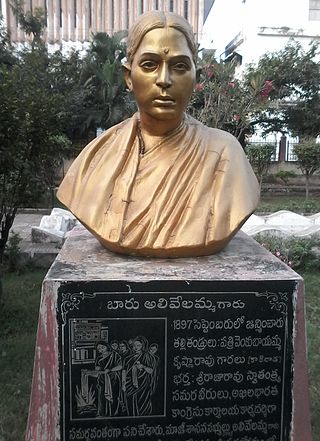
Baru Alivelamma (1895–1973) was a prominent freedom fighter in India during the Indian independence movement.
Hajara Beebi Ismail was an Indian freedom fighter and social worker. She was the wife of Mohammed Ismail Saheb, who was also a freedom fighter from Tenali of Guntur district in Andhra Pradesh.
Amjadi Bano also known as Amjadi Bano Begum was an Indian revolutionary, freedom fighter, politician and journalist. She was married to Maulana Muhammad Ali Jauhar. She was the lone women in the first working committee of the Muslim League.
Sivagami Ammayar was an Indian freedom fighter and member of the Indian National Army. Born in Tamil Nadu and later migrating to Malaysia, she was inspired by Netaji Subash Chandra Bose to join the freedom struggle at a young age.
Sornathammal (1916–2007) was an Indian freedom fighter and social reformer who actively participated in the Indian independence movement.












